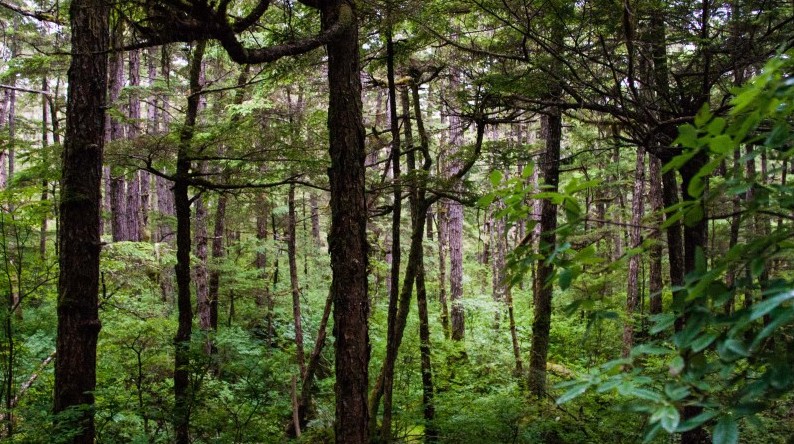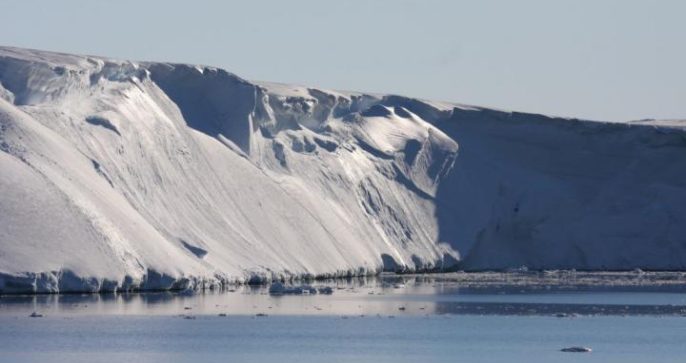Ecologist Nicolas Medina explains how fossil-fuel use impacts forests and drives climate change. Carbon may run deeper than you think, and forests alone can’t stop climate change.
By Nicholas L. Medina
The US is the second-largest emitter of greenhouse gases after China, and President Obama has called climate change a “national and global security threat.” Now, we urgently need to understand why our fossil fuel use will have long-lasting effects on global climates and our forests. We need to reduce our societal CO2 emissions quickly and substantially.
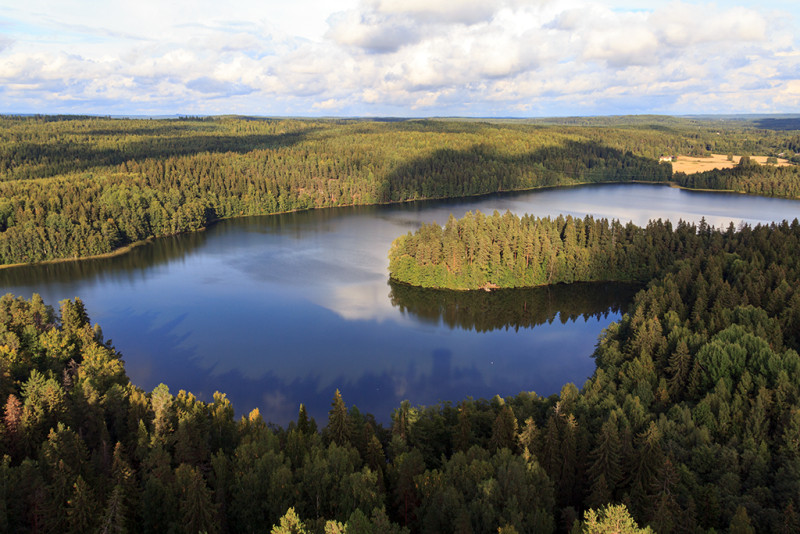
Can We Stop Climate Change?
Forest ecosystems are one of the largest stores of carbon on Earth, but they can’t stop climate change all on their own. Consisting of old trees and deep, rich soils, the forests are very good at absorbing greenhouse gasses from the atmosphere. However, our forests may not be able to protect us from climate change as much as previously thought. New data reveals natural limits to the rates at which forests can remove excess CO2—the most persistent greenhouse gas—from our atmosphere.
Currently, forests are said to grow enough to remove 2.4 petagrams (about the weight of 343 million elephants) of CO2 every year from our atmosphere via photosynthesis. This equals almost one third of total emissions produced by humans—9.1 petagrams—so remember to thank a forest, today!
Want to better understand how plants turn sunlight into fuel? Read this: Lasers Shed Light on Photosynthesis
As forests age, the rate at which they remove CO2 from the atmosphere declines, and so does their ability to stop climate change. This is largely due to the types of trees that dominate older forests compared with younger forests. As a forest ages, faster-growing, light-loving tree species (like aspen and paper birch) are gradually replaced by species that produce more dense wood, tolerate shade better, and grow more slowly (like maples, oaks, beeches, and pines).
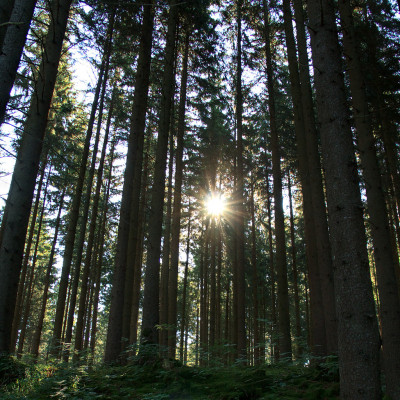
However, recent studies that look at the effects of future environmental conditions on forests show that age will likely not be the only thing limiting forests’ ability to absorb CO2. There are other things going on in the leaves and soil.
Future Trees May Grow Differently
Ecologists and foresters used to think that the rate of forest growth would continue to increase as global atmospheric CO2 levels rose.
This year, however, Peter van der Sleen et al. reported that Earth’s tropical forests have not shown signs of increased growth in the last 150 years of rising atmospheric CO2 levels. Instead of making more wood or leaves (the tissues that are responsible for storing most of the recently captured CO2 in forests) the trees produced more fruits and flowers. This might be because the trees just couldn’t get enough nutrients to grow faster.
RELATED: FOREST RESTORATION, NOT PLANTATIONS, WILL CURB WARMING
These results suggest that while Earth’s forests might absorb extra CO2 for 10 years or so, after that the trees begin to really need other nutrients. Afterward, they may end up using water more efficiently to compensate for nutrient levels that are too low to support growth. Thus, forests may likely not able to offset enough human-caused CO2 emissions in the future to successfully stop climate change because their behavior in the global carbon cycle will vary.
Forest Growth, Soil Carbon, Climate Change, and DIRT
Even if forests did find enough the nutrients and water to grow faster in a higher CO2 climate, that extra CO2 would be stored in their leaves. After the leaves die and decompose, the extra carbon would be released back into the atmosphere.
Soils are very important because they help us (concerned citizen scientists) track where atmospheric CO2 goes after it is absorbed by plants. Soil carbon can remain stored for millennia in the form of decaying material that eventually turns into brown, amorphous, nutrient-rich soil.
There is an international network of ongoing experiments called DIRT (Detritus Input and Removal Treatment) showing that the amount of soil organic matter remaining in forest soil changes over several years depending on how much plant litter—or leaves and roots—are decaying each year.
Carbon in soil can decline because microbes, like bacteria and fungi, live in and eat the plant litter. However, the dead leaves dropped on the ground in an average year add more carbon to the forest floor than the microbes can process.
Here is the really crazy part: If in just one year, the trees produce and drop twice the usual number of leaves, you don’t get twice the organic matter or carbon. In fact, soil organic matter accumulates over time as if only one year’s worth of leaves were falling each year.
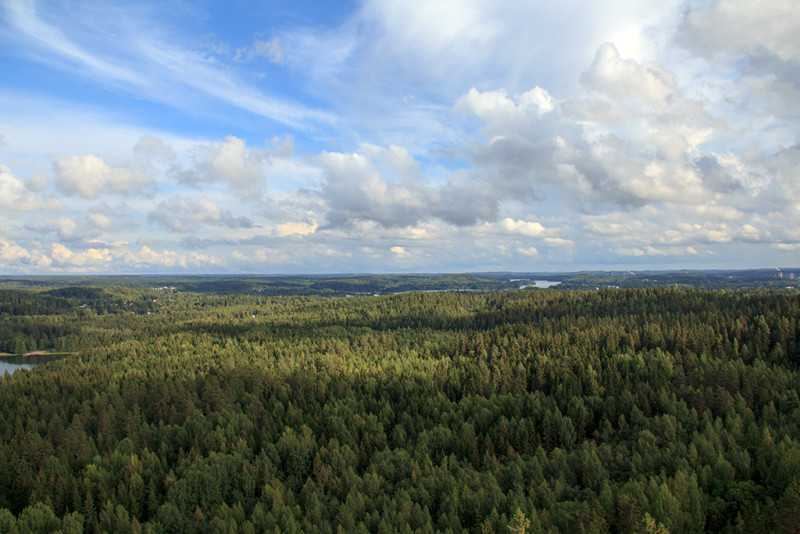
How Does this Happen?
Just as humans can last a week without food but only three days without water, soil microbes need nitrogen molecules to build proteins so that they can break down all of this extra leaf carbon. So, they mine for nitrogen to sustain their new ‘sugar high’. Conveniently, nitrogen is the second-most abundant molecule in soil organic matter after carbon.
However, this means that the soil microbes end up working their way through the soil organic matter that has built up in the forest soil throughout all of last year to get the nitrogen they need. You might imagine that these soil microbes ‘mosey around’ carbon atoms to find nitrogen. As they do this, they keep having to break apart carbon bonds by converting them into energy or CO2.
RELATED: Can climate change increase violence against women?
Good Compost Doesn’t Smell Bad
If you compost at home, you probably know that you need an appropriate balance of fruit cores to leaves: your pet microbes need enough nitrogen for the amount of carbon that surrounds them. If you have prior experience trying to compost, you may have noticed that if this ratio is off, you will end with either a pile of leaves (too much carbon) or, what might be more common, a pile of rotting and fruit-fly-infested fruit cores (too much nitrogen). Good compost never has to smell bad!
This loss of older, already-stored carbon from forests’ soil organic matter as a result of more plant litter is called soil priming. It is happening in temperate forests around the world. Soil priming has also been shown to occur in tropical forests after only seven years and can last for many decades.
These new findings reveal the limited ability of forests to save our climate under ‘business as usual’ CO2-emission cases over the next few decades or even centuries. We need to adopt ambitious CO2 emission reduction goals if we are going to stop climate change.
More about climate change: Miss Louisiana Earth Invites You To Volunteer Online and Map Where Vital Wetlands Are Being Lost
Citizen science projects in need of volunteers: Let’s talk about trees!
References
- Bernhardt, W.H.S.a.E.S., Biogeochemistry: An Analysis of Global Change. 3 ed. 2013, Waltham, MA, USA and Oxford, UK: Elsevier Inc.
- Yude Pan, R.A.B., Jingyun Fang, Richard Houghton, Pekka E. Kauppi, Werner A. Kurz, Oliver L. Phillips, Anatoly Shvidenko, Simon L. Lewis, Josep G. Canadell, Philippe Ciais, Robert B. Jackson, Stephen W. Pacala, A. David McGuire, Shilong Piao, Aapo Rautiainen, Stephen Sitch, Daniel Hayes, A large and persistent carbon sink in the world’s forests. Science, 2011. 333: p. 988-93.
- van der Sleen, P., et al., No growth stimulation of tropical trees by 150 years of CO2 fertilization but water-use efficiency increased. Nature Geoscience, 2014. 8(1): p. 24-28.
- Charles T. Garten, J., Colleen M. Iversen, and Richard J. Norby, Litterfall 15N abundance indicates declining soil nitrogen availability in a free-air CO2 enrichment experiment. Ecology, 2011. 92(1): p. 133-9.
- William R. Weider, C.C.C., W. Kolby Smith, and Katherine Todd-Brown, Future productivity and carbon storage limited by terrestrial nutrient availability. Nature Geoscience, 2015. 8: p. 441-5.
- Michael W. I. Schmidt, M.S.T., Samuel Abiven, Thorsten Dittmar, Georg Guggenberger, Iven A. Janssens, Markus Kleber, Ingrid Kogel-Knabner, Johannes Lehmann, David A. C. Manning, Paolo Nannipieri, Daniel P. Rasse, Steve Weiner, Susan E. Trumbore, Persistence of soil organic matter as an ecosystem property. Nature, 2011. 478: p. 49 – 56.
- Richard J. Norby, E.H.D., Birgit Gielen, Carlo Calfapietra, Christian P. Giardina, John S. King, Joanne Ledford, Heather R. McCarthy, David J. P. Moore, Reinhart Ceulemans, Paolo De Angelis, Andrien C. Finzi, David F. Karnosky, Mark E. Kubiske, Martin Lukac, Kurt S. Pregitzer, Gluseppe E. Scarascia-Mugnozza, William H. Schlesinger, and Ram Oren, Forest response to elevated CO2 is conserved across range of productivity. Proceedings of the National Academy of Sciences, 2005. 102(50): p. 18052-6.
- Hand, E., Tropical forests may not combat climate change, in Science. 2014, AAAS.
- William R. L. Anderegg, A.F., Cho-ying Huang, Lorraine Flint, Joseph A. Berry, Frank W. Davis, John S. Sperry, and Christopher B. Field, Tree mortality predicted from drought-induced vascular damage. Nature Geoscience, 2015. 8: p. 367-71.
- Susan E. Crow, M.R., Olivia S. Schubert, and Carlos A. Sierra, Optimization of methodto quantify soil organic matter dynamics and carbon sequestration potential in volcanic ash soils. Biogeochemist, 2015. 123: p. 27-47.
- Kate Lajtha, K.L.T., Marc G. Kramer, Christopher Swanston, Richard D. Bowden, Knute Nadelhoffer, Changes to particulate versus mineral-associated soil carbon after 50 years of litter manipulation in forest and prairie experimental ecosystems. Biogeochemistry, 2014. 119(1-3): p. 341 – 360.
- Richard D. Bowden, L.D., Alain F. Plante, Clément Peltre, Knute Nadelhoffer, and Kate Lajtha, Litter input controls on soil carbon in a temperate deciduous forest. Soil Science Society of America Journal, 2014. 78: p. S66-75.
- Kate Lajtha, R.D.B., and Knute Nadelhoffer, Litter and root manipulations provide insights into soil organic matter dynamics and stability. Soil Science Society of America Journal, 2014. 78: p. S261-9.
- M. M. Mayzelle, M.L.K., K. Lajtha, R. D. Bowden, J. Six, Effects of detrital inputs and roots on carbon saturation deficit of a temperate forest soil. Soil Science Society of America Journal, 2014. 78: p. S76-S83.
- Zsuzsa Veres, Z.K., István Fekete, János Attila Tóth, Kate Lajtha, Kimberly Townsend, Béla Tóthmérész, Soil extracellular enzyme activities are sensitive indicators of detrital inputs and carbon availability. Applied Soil Ecology, 2015. 92: p. 18-23.
- Emma J. Sayer, M.S.H., Helen K. Grant, Toby R. Marthews, and Edmund V. J. Tanner, Soil carbon release enhanced by increased tropical forest litterfall. Nature Climate Change, 2011. 1: p. 304-7.
- Kuzyakov, Y., Prime time for microbes. Nature Climate Change, 2011. 1: p. 295-7.
- Kuzyakov, y., Sources of CO2 efflux from soil and review of partitioning methods. Soil Biology and Biochemistry, 2006. 38: p. 425 – 448.
- Thompson, A. IPCC says climate change is here, world needs to adapt. Climate Central, 2014.
- Mengpin Ge, J.F., and Thomas Damassa 6 graphs explain the world’s top 10 emitters. World Resources Institute, 2014.
- Showstack, R., Obama links climate change to national and global security, in EOS. 2015, American Geophysical Union.
About the Author
Nicholas Medina is a graduate student of Ecology and Evolutionary Biology at the University of Michigan in Ann Arbor, a member of the Ecological Society of America and the American Geophysical Union, alumnus of the STEM Posse program at Brandeis University, and winner of the Benjamin A. Gilman International Scholarship, as well as a volunteer science communicator with Science Connected. Contact: [email protected].
Featured photo of a wooded area in Alaska, USA courtesy of Max Goldberg

